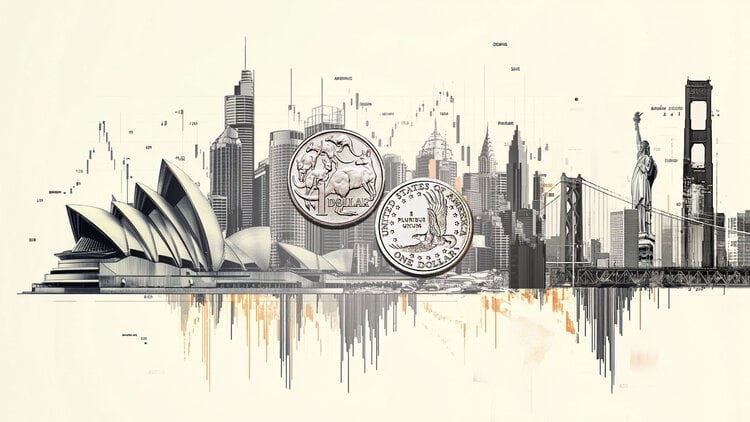- AUD/JPY is trading in negative territory around 96.50 in the Asian session on Tuesday, losing 0.77% on the day.
- The RBA decided to keep the OCR at 4.35% at its December meeting on Tuesday.
- Geopolitical risks could boost safe haven flows, benefiting the JPY.
The AUD/JPY cross weakens near 96.55 during Asian trading hours on Tuesday. The Australian Dollar (AUD) retreats after the Reserve Bank of Australia’s (RBA) interest rate decision as the tone in the statement has become slightly dovish.
The RBA held the Official Cash Rate (OCR) at 4.35% following the conclusion of its December monetary policy meeting. The decision was in line with market expectations. The RBA made no changes to its policy settings for the ninth consecutive meeting. Australian Dollar attracts some sellers following RBA interest rate decision.
According to the RBA’s Monetary Policy Statement, council members are gaining some confidence that inflationary pressures are easing in line with these recent forecasts, but risks remain. The monetary policymaker further stated that the outlook remains uncertain and broad and that they will continue to rely on data and evolving risk assessment to guide their decisions.
Uncertainty over when the Bank of Japan (BoJ) will raise interest rates again weighs on the Japanese yen (JPY) against the shared currency. BoJ Governor Kazuo Ueda indicated his willingness to raise interest rates again if the BoJ becomes more confident that inflation would remain around 2% due to rising wages and robust domestic demand. Traders have priced in a nearly 28% chance of a BoJ rate hike this month, up from about 66% at the end of last month.
However, rising geopolitical tensions in the Middle East, particularly after the fall of Syrian President Bashar al-Assad, could boost safe-haven currencies like the JPY. On Monday, the rebel group that overthrew Syrian President Bashar Al-Assad agreed to hand over power to Mohammed Al Bashir to form a transitional administration. Investors will closely monitor the development of geopolitical risks in this region, as the collapse of the Syrian leader’s regime could lead to a conflict involving countries in the region.
The Australian Dollar FAQs
One of the most important factors for the Australian Dollar (AUD) is the level of interest rates set by the Reserve Bank of Australia (RBA). As Australia is a resource-rich country, another key factor is the price of its largest export, iron ore. The health of the Chinese economy, its largest trading partner, is a factor, as is inflation in Australia, its growth rate and the Balance of Trade. Market sentiment, that is, whether investors bet on riskier assets (risk-on) or seek safe havens (risk-off), is also a factor, with the risk-on being positive for the AUD.
The Reserve Bank of Australia (RBA) influences the Australian Dollar (AUD) by setting the level of interest rates that Australian banks can lend to each other. This influences the level of interest rates in the economy as a whole. The RBA’s main objective is to maintain a stable inflation rate of 2%-3% by adjusting interest rates up or down. Relatively high interest rates compared to other major central banks support the AUD, and the opposite for relatively low ones. The RBA can also use quantitative easing and tightening to influence credit conditions, with the former being negative for the AUD and the latter being positive for the AUD.
China is Australia’s largest trading partner, so the health of the Chinese economy greatly influences the value of the Australian Dollar (AUD). When the Chinese economy is doing well, it buys more raw materials, goods and services from Australia, which increases demand for the AUD and drives up its value. The opposite occurs when the Chinese economy does not grow as fast as expected. Therefore, positive or negative surprises in Chinese growth data usually have a direct impact on the Australian Dollar.
Iron ore is Australia’s largest export, with $118 billion a year according to 2021 data, with China being its main destination. The iron ore price, therefore, may be a driver of the Australian dollar. Typically, if the price of iron ore rises, the AUD also rises as aggregate demand for the currency increases. The opposite occurs when the price of iron ore falls. Higher iron ore prices also tend to result in a higher likelihood of a positive trade balance for Australia, which is also positive for the AUD.
The trade balance, which is the difference between what a country earns from its exports and what it pays for its imports, is another factor that can influence the value of the Australian dollar. If Australia produces highly sought-after exports, its currency will gain value solely from the excess demand created by foreign buyers wanting to purchase its exports versus what it spends on purchasing imports. Therefore, a positive net trade balance strengthens the AUD, with the opposite effect if the trade balance is negative.
Source: Fx Street
I am Joshua Winder, a senior-level journalist and editor at World Stock Market. I specialize in covering news related to the stock market and economic trends. With more than 8 years of experience in this field, I have become an expert in financial reporting.







